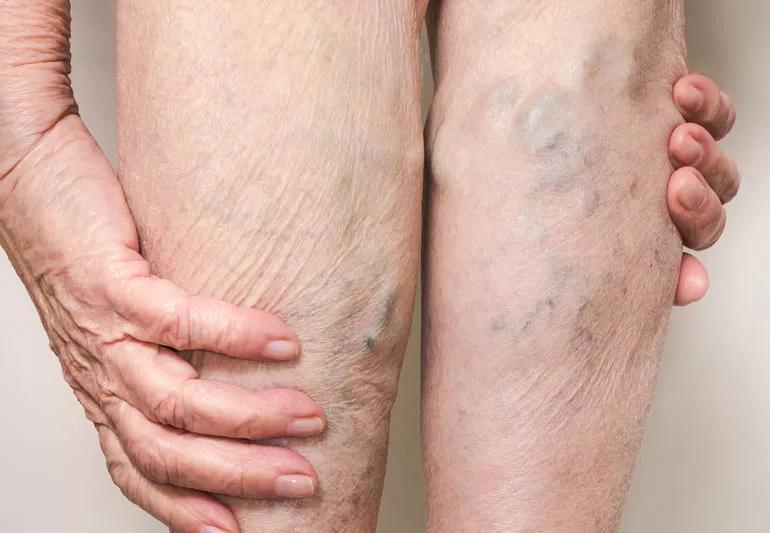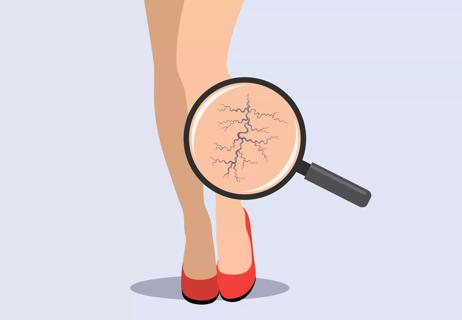Treating them can improve your vascular health

And you thought they were just an issue for Grandma. Big, blue, bulging veins — called varicose veins — can appear on your legs, too.
Advertisement
Cleveland Clinic is a non-profit academic medical center. Advertising on our site helps support our mission. We do not endorse non-Cleveland Clinic products or services. Policy
Sometimes varicose veins run in the family. Sometimes they’re because you stand a lot. Overweight people are more likely to have varicose veins. So are women, mostly due to pregnancy.
Increased pressure, from carrying more weight over time, can weaken the walls of your blood vessels. Rather than efficiently shooting blood back to your heart, weak-walled veins swell as they allow blood to pool.
That’s what makes varicose veins so visible, especially when they’re close to your skin. But they’re not merely a cosmetic concern, says Cleveland Clinic vascular surgeon George Anton, MD. Big, blue varicose veins can raise a red flag about your vascular health.
“When veins are big enough, the blood that pools in them can clot,” he says. “Clots can travel through your body, putting you at risk for a pulmonary embolism, which could be life threatening.”
Because of the clotting risk, all large varicose veins should be evaluated by a physician, says Dr. Anton. So should veins that cause one or more of these symptoms:
Advertisement
Treatment depends on the size of the vein, the complexity of its branches and evidence of a clot, says Dr. Anton. Usually evaluation involves a physical exam and ultrasound imaging.
“Most of the time, the first line of treatment is wearing compression stockings,” says Dr. Anton. “If veins are very large and complicated, however, stockings usually aren’t enough.”
Other treatment options include:
“It’s common to require a combination of treatments,” says Dr. Anton. “In each case, we try to minimize complication from bleeding and clotting. For example, if we suspect there’s a clot, we may stay away from ablation and sclerotherapy. Surgery may be the safest option.”
If you have varicose veins or just want to reduce your risk of developing them, try these tips:
Preventing or reducing varicose veins not only will keep your legs looking younger, but also will improve your vascular health.
Advertisement
Learn more about our editorial process.
Advertisement

Home remedies can improve (but not cure) the symptoms and appearance of varicose veins

Unlike varicose veins, spider veins don't necessarily indicate poor circulation

Some symptoms should be taken seriously

Most recommended precautions center around minimizing bruising or swelling

Even one drink can have an impact on your cognitive function leading to slurred speech, blurred vision and impaired memory

Understand who may (and may not) benefit

Type 2 diabetes isn’t inevitable with these dietary changes

Applying a hot or cold compress can help with pain